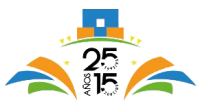Optimization of Real-time image Reconstruction algorithms for an automated refraction device

| AUTHORS / CAREER / CENTER | Marcos Rubio/ Biomedical Engineering / Universidad Carlos III de Madrid |
| SUPERVISOR | Eduardo Lage, PhD, Universidad Autonoma de Madrid |
| TYPE | Bachelor Thesis |
| ABSTRACT | Motivation: Millions of people suffer from uncorrected poor vision, directly affecting their daily lives and efficiency at work. This problem accentuates in developing countries such as China or India, where the access to eye-care is highly restricted mainly due to the lack of qualified professionals to provide eyeglasses prescriptions. During the last years our research group in Universidad Autónoma de Madrid, together with the company Plenoptika Inc (USA) has been developing the QuickSee: a hand-held and low-cost autorefractor able to obtain accurate eyeglass prescriptions in a few seconds. The device is extremely easy- to-use which allows minimally-trained personnel to perform reliable refraction. Problem Statement: The initial version of the QuickSee is designed to measure one eye at a time, taking roughly 10 seconds per eye. The use of a single measurement channel makes the device low-cost, which is the main feature we require to tackle the uncorrected refractive error problem in developing countries. However, a QuickSee capable of measuring both eyes simultaneously is expected to be a revolutionary product not only in low-resource settings but also in developed countries, in which a portable and accurate binocular autorefractor has several market advantages. The bottleneck to achieve such a system is the performance of the image processing algorithms used by the device to determine the final refraction. Currently the processing bandwidth of the system is 8 images per second, however, for the binocular system at least 12 images per second would be required. The main objective of this project is to increase the processing bandwidth of the QuickSee without changing the core hardware. Furthermore, as secondary objective of this project we want to include additional functionalities in our algorithms capable of detecting standard conditions which may affect the accuracy of the reading (e.g. accommodation during the measurement, misalignment with the laser beam), and inform the user, so actions can be taken to solve the situation.Approach: The existing image processing algorithms have been reformulated using a profile-guided approach. Different solutions were evaluated and implemented in order to reduce the computational resources required by the reconstruction software while maintaining accuracy of the results. To validate the new approaches a clinical trial with 56 patients has been performed and used to compare the accuracy of the different versions of the reconstruction algorithms. Results: New algorithms developed during the project have increased the processing bandwidth in more than 70% for the target hardware, thus allowing the development of the dual optical channel configuration. Accuracy of new algorithms is comparable of that achieved with previous versions. Moreover, precise image analysis functionalities have been added allowing the system to accurately identify readings with some type of problem and even correct situations which previous versions of the software were unable to handle properly. Conclusions: The device exhibits similar accuracy with the new processing algorithms, whereas the processing time has been reduced sufficiently to process two eyes in real-time. New functionalities have been added and validated in a clinical trial thus increasing the quality and value of the QuickSee technology. Key Words: autorefractor, image processing, optimization, Shack Hartmann |
| LINK | Confidential content |



